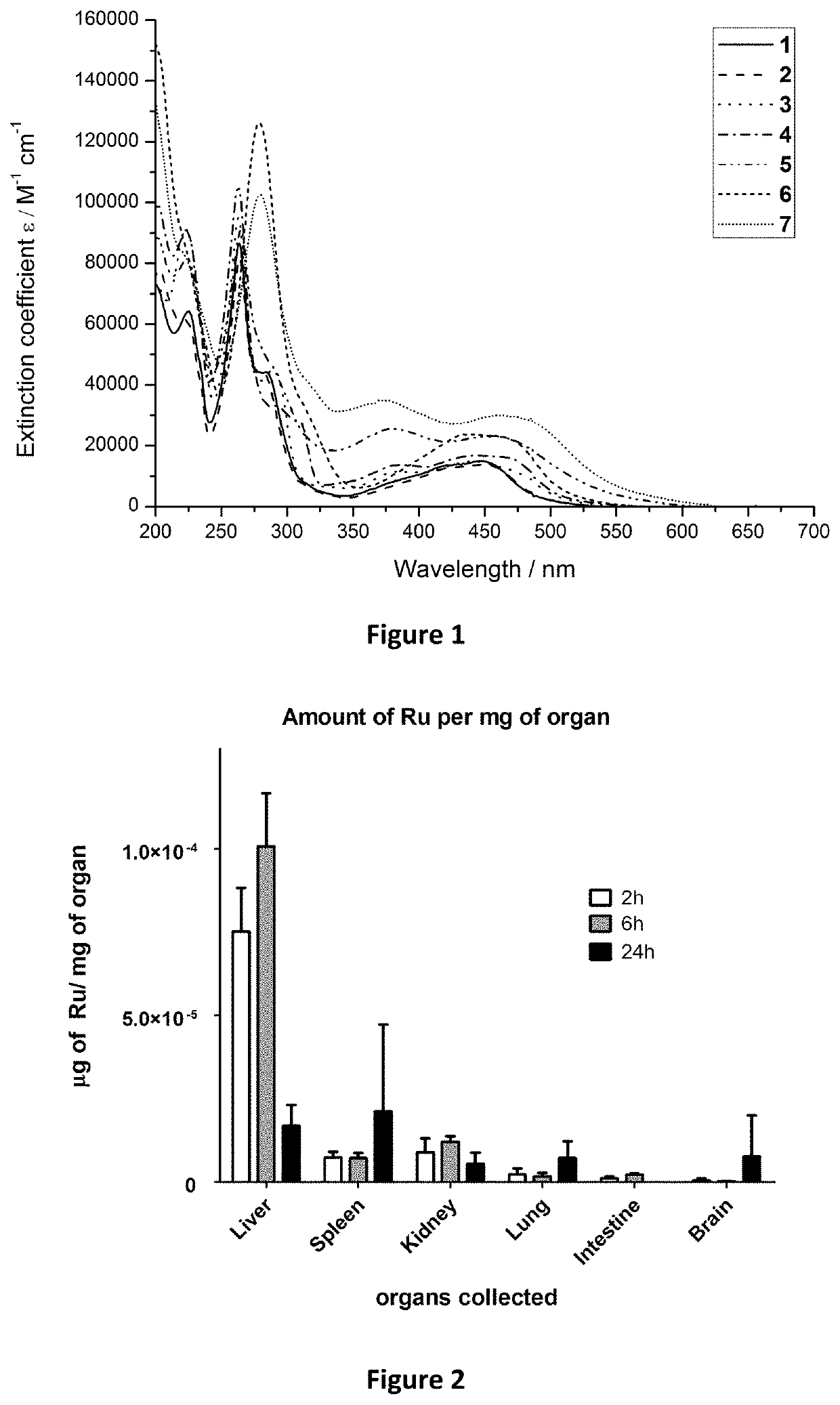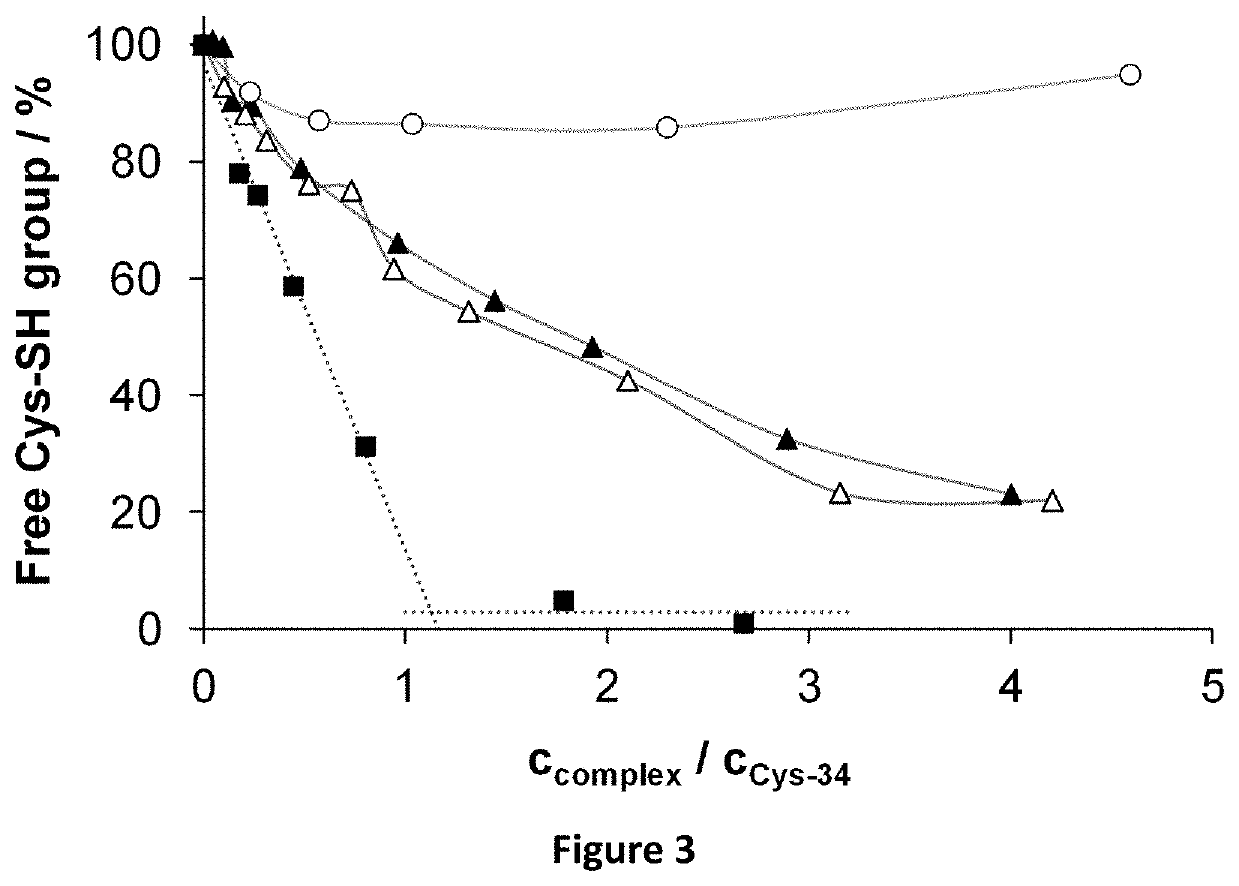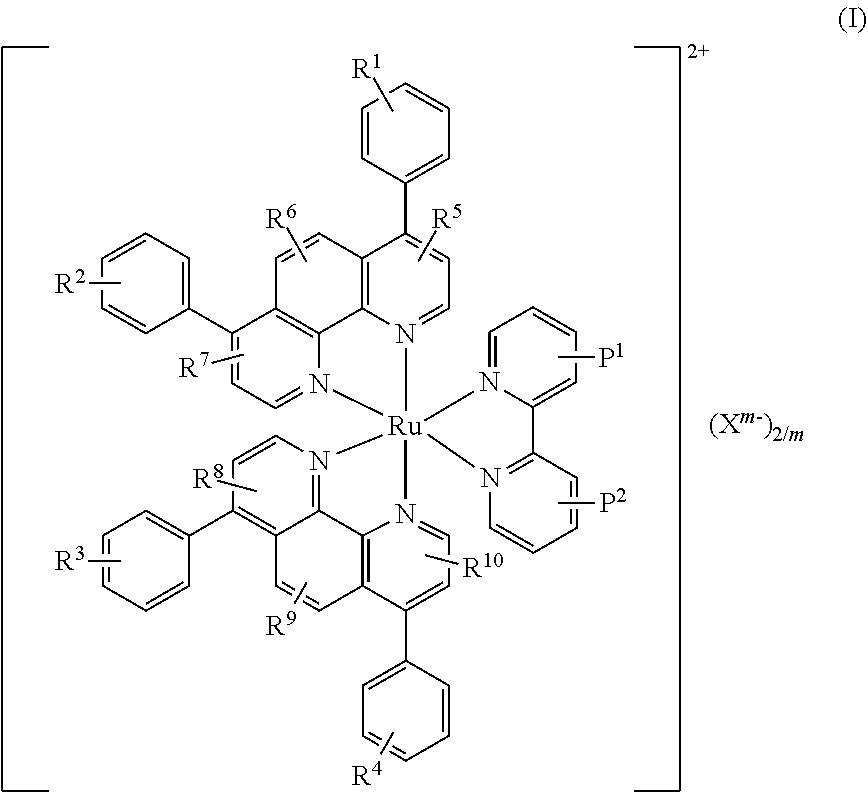Ruthenium (II) Complexes and Conjugates Thereof for Use as Photosensitizer Agent in Photodynamic Therapy
- Summary
- Abstract
- Description
- Claims
- Application Information
AI Technical Summary
Benefits of technology
Problems solved by technology
Method used
Image
Examples
examples
1) Synthesis
Materials
[0180]All chemicals were obtained from commercial sources and were used without further purification. Solvents were dried over molecular sieves if necessary. The Ru(II) complexes Dichlorobis(1,10-phenanthroline)ruthenium(II) [RuCl2(phen)2] and Dichlorobis(4,7-Diphenyl-1,10-phenanthroline)ruthenium(II) [RuCl2(bphen)2] were synthesised as previously published using the respective ligands (Sullivan, B. et al., 1978). The substituted bipyridine ligands 2,2′-Bipyridine-4,4′-dicarbonitrile, (E,E′)-4,4′-Bis(N,N-dimethylaminovinyl)-2,2′-bipyridine and 2,2′-Bipyridine-4,4′-dicarboxaldehyde were synthesised as reported (Wuest, J. D. 2011 and Le Bozec, H., 2001). The Ru(II) complexes [Ru(phen)2(dppz-7-aminomethyl)](PF6)2 was synthesized as previously reported (Gasser, G. et al., 2015).
Instrumentation and Methods
[0181]1H and 13C NMR spectra were recorded on a Bruker 400 MHz NMR spectrometer. ESI-MS experiments were carried out using a LTQ-Orbitrap XL from Thermo Scientific ...
PUM
| Property | Measurement | Unit |
|---|---|---|
| Composition | aaaaa | aaaaa |
| Pharmaceutically acceptable | aaaaa | aaaaa |
Abstract
Description
Claims
Application Information
 Login to view more
Login to view more - R&D Engineer
- R&D Manager
- IP Professional
- Industry Leading Data Capabilities
- Powerful AI technology
- Patent DNA Extraction
Browse by: Latest US Patents, China's latest patents, Technical Efficacy Thesaurus, Application Domain, Technology Topic.
© 2024 PatSnap. All rights reserved.Legal|Privacy policy|Modern Slavery Act Transparency Statement|Sitemap



